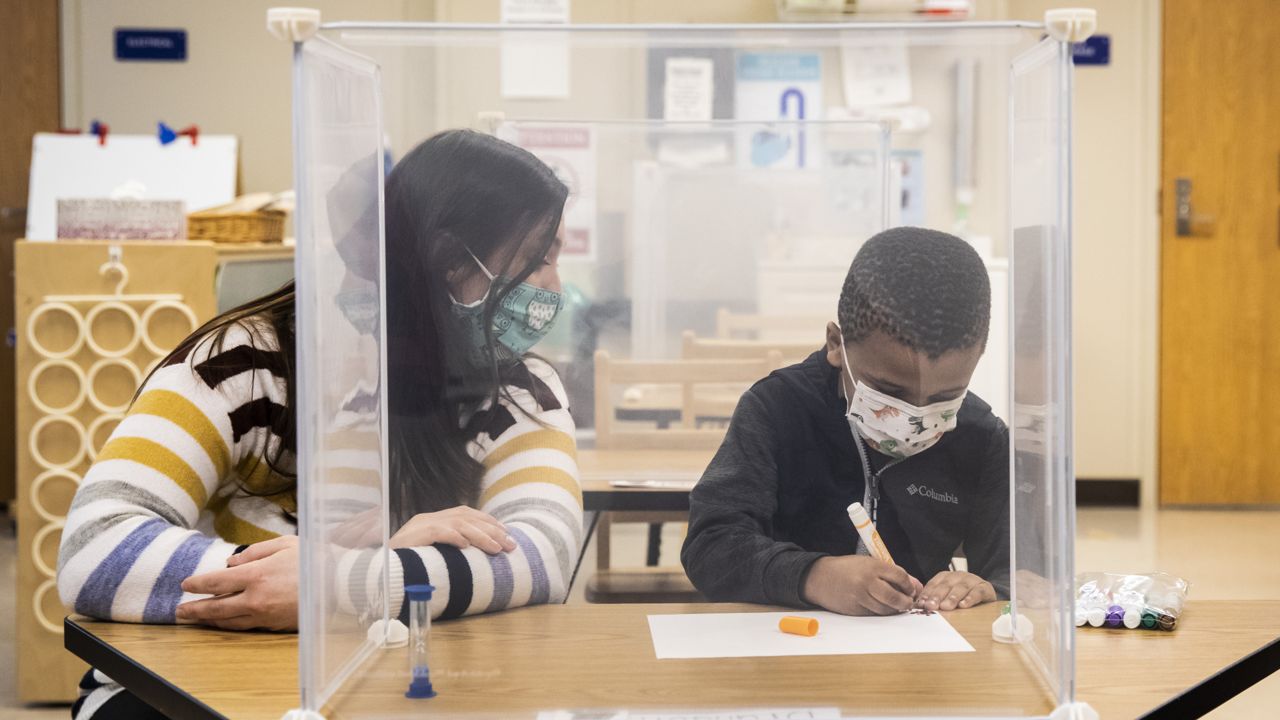The U.S. Centers for Disease Control and Prevention released updated guidance for childcare centers operating during the coronavirus pandemic on Friday, highlighting the importance of continued mask-wearing and appropriate social distancing protocols.
Friday’s announcement marks the first time since July 23, 2020 that guidelines for opening or continuing child care services have been updated.
The guidance is intended for a wide range of childcare facilities, including care centers, family child care homes, Head Start programs, and pre-kindergarten facilities. The CDC stressed that its newly-released protocols are meant to supplement, and not replace, any federal, state, and local public health laws.
Much of the guidance centers on what CDC director Dr. Rochelle Walensky called “prevention strategies” in Friday’s White House COVID-19 briefing.
"Today, CDC is again releasing updated guidance based on the most recent science," Walensky said. "That science includes additional evidence showing that when used consistently and correctly, prevention strategies such as mask-wearing, staying home when sick and good hand hygiene can allow childcare programs to operate safely and reduce the spread of COVID-19."
Child care programs should “fully implement and adhere to multiple prevention strategies,” the CDC recommends. These strategies should be tailored based on location, size of the child care center, and the possibility of community spread, the agency added. Such strategies should include components like requiring children and caregivers to stay home when sick, requiring all children above the age of 2 years old wear a mask when appropriate, avoiding crowds, creating social-distancing protocols, and consistent cleaning and disinfecting.
The guidance — which came soon after several states lifted mask-wearing requirements — also suggests that caregivers “teach and reinforce the consistent and correct use of masks for all staff and children aged 2 years and older.”
In order to encourage young children to comply with the strategies, the CDC suggests posting “signs in visible locations (entrances and restrooms) that promote everyday protective measures and describe how to stop the spread of germs (such as by properly washing hands and properly wearing a mask).”
Caregivers can use sample posters from the CDC’s online toolkit, which Walensky said serves as a one-stop-shop for guidance and planning documents.
The CDC also provided new resources for child care centers, homes, and parents and guardians, many of which are aimed at quick identification of COVID-19 symptoms. The primary possible symptoms include a cough, fever, headache, diarrhea, and vomiting; other symptoms include shortness of breath, chills, sore throat, loss of taste or smell, muscle pain, and poor appetite.
In the infographic provided for child care centers, the CDC recommends first separating the child with coronavirus symptoms from their class in a “discreet and calm” manner. Caregivers are then instructed to “have the child safely escorted from the classroom to a designated isolation area.”
The guidance also calls vaccinations an “important tool” in helping child care providers mitigate the spread of COVID-19, but notes in part: “Even after child care providers and staff are vaccinated, there will be a need to continue prevention measures for the foreseeable future including wearing masks, physical distancing, and other important prevention strategies.”
"I also want to stress that our childcare guidance emphasizes the importance of COVID-19 vaccination as an additional layer of prevention for childcare workers," Walensky said Friday. "I strongly encourage America's childcare workers to get vaccinated."
On March 2, the Department of Health and Human Services issued a directive to states that all teachers, childcare workers, and school staff be eligible to receive their COVID-19 vaccine.



